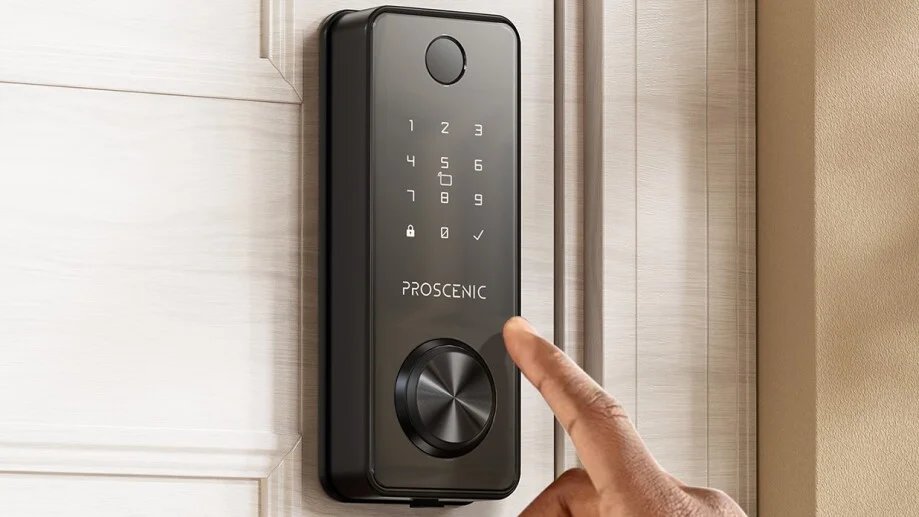In an era where convenience and security define modern living, smart lock installation has emerged as a powerful solution for both homeowners and businesses. By replacing traditional keys with advanced keyless entry systems, smart locks offer a seamless blend of security, accessibility, and automation. This technology not only provides peace of mind but also integrates with smart home systems, elevating the user experience to new heights.
Why Smart Lock Installation Matters Today
The reliance on physical keys comes with challenges such as misplacement, duplication risks, and restricted access control. A smart lock installation eliminates these issues by allowing users to unlock doors with a smartphone, biometric scan, or a personalized code. Businesses and families in urban settings, particularly in fast-paced cities like Dubai, increasingly adopt smart locks for their reliability and efficiency.
Key Features of Smart Locks
1. Keyless Entry Systems
One of the most appealing aspects of a smart lock is keyless entry. Instead of fumbling for keys, users can enter their property via:
-
PIN codes
-
Biometric recognition (fingerprints)
-
Bluetooth-enabled smartphones
-
Wi-Fi-enabled remote access
This flexibility ensures that homeowners no longer face lockouts due to lost or forgotten keys.
2. Remote Access Control
With Wi-Fi-enabled models, users can manage access from anywhere in the world. For instance, a property manager can unlock a unit remotely for tenants, or a homeowner can let in guests without being physically present. This feature enhances convenience and security management.
3. Integration with Smart Home Devices
Modern smart locks easily integrate with Amazon Alexa, Google Assistant, and Apple HomeKit, enabling voice commands and automation. For example, a lock can be programmed to automatically secure itself at a specific time each night.
4. Temporary and Scheduled Access
Smart locks provide an option to create temporary digital keys for guests, cleaners, or contractors. These keys can be set to expire after a certain period, ensuring better control over who enters the property.
5. Advanced Security Measures
Unlike traditional locks, smart locks are equipped with encryption technologies and anti-tampering sensors, reducing the risk of unauthorized entry. Many models also feature activity logs, showing when and who accessed the door.
Benefits of Smart Lock Installation
Enhanced Security
By removing the dependency on physical keys, theft and unauthorized duplication risks are minimized. Encrypted digital entry methods further strengthen property security.
Unmatched Convenience
Smart lock installation allows for hands-free entry, remote control, and effortless access sharing, making life more efficient and stress-free.
Cost-Effectiveness in the Long Run
Although the initial cost may be higher than traditional locks, the reduced risk of theft, lock replacement, and key duplication make smart locks a cost-effective investment.
Ideal for Residential and Commercial Properties
From family homes to office buildings and rental properties, smart locks provide tailored solutions that enhance both accessibility and safety.
Step-by-Step Guide to Smart Lock Installation
Step 1: Choosing the Right Smart Lock
Different environments require different smart lock models:
-
Deadbolt smart locks for enhanced residential security
-
Lever-handle smart locks for office spaces
-
Biometric-enabled locks for maximum access control
-
Wi-Fi or Bluetooth-enabled locks for remote management
Step 2: Preparing the Door
Before installation, it is crucial to ensure that the door is properly aligned and compatible with the chosen smart lock model. Incorrect alignment may compromise the lock’s efficiency.
Step 3: Installing the Hardware
Smart lock hardware usually includes:
-
The interior component (mounted inside the property)
-
The exterior keypad or scanner
-
Batteries or a power source
These components are fixed onto the door, often replacing the existing lock mechanism.
Step 4: Configuring the Software
Once installed, the lock must be connected to its mobile application. This step involves:
-
Setting up user PINs or biometric scans
-
Configuring Wi-Fi/Bluetooth settings
-
Linking with other smart home devices
Step 5: Testing and Troubleshooting
After installation, the lock should be thoroughly tested to confirm smooth operation. It is advisable to check both manual overrides and digital access to ensure reliability.
Common Challenges in Smart Lock Installation
Compatibility Issues
Not all doors are suitable for smart locks. Thickness, alignment, and material can affect installation success.
Battery Dependency
Smart locks require power, typically through batteries. Users must ensure timely replacement to avoid lockouts.
Cybersecurity Concerns
As with any connected device, smart locks may be vulnerable to hacking attempts. Selecting models with high-level encryption and regular firmware updates is essential.
Smart Lock Maintenance Tips
-
Regularly replace batteries to maintain functionality
-
Update firmware to prevent security vulnerabilities
-
Clean sensors and keypads to ensure accurate readings
-
Test backup access methods to prepare for emergencies
Future of Smart Lock Technology
With AI integration and biometric advancements, smart locks are expected to become even more intelligent and adaptive. Future models may include:
-
Facial recognition systems
-
Voice authentication
-
Integration with AI-driven home automation
As smart cities expand globally, smart lock adoption will continue to rise, ensuring maximum convenience and security for modern lifestyles.
Conclusion: The Power of Keyless Entry
A smart lock installation transforms the way people secure and access their properties. By offering keyless entry, remote management, and advanced security features, smart locks represent the future of modern living. For both residential and commercial applications, this technology delivers unparalleled convenience and peace of mind, making it a vital upgrade in today’s digital world.



